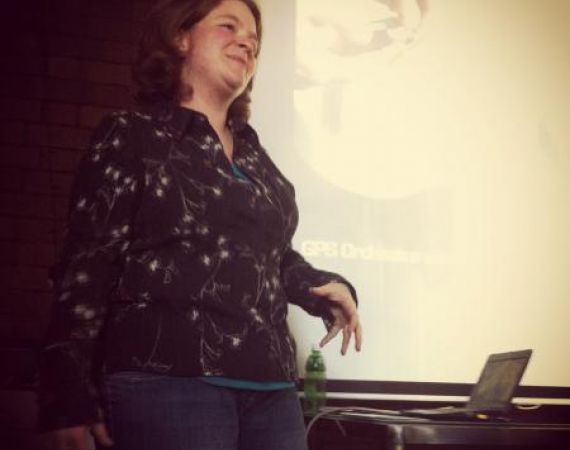Posted on Thu 13 Dec 2012
Place interfaces -Nikki Pugh: Lunchtime Talk Write-Up
On Friday 23 November we were joined by artist Nikki Pugh whose main area of enquiry is centred around interactions between people and place: often using tools and strategies from areas such as pervasive games and physical computing to set up frameworks for exploration. In the talk Nikki spoke about…

On Friday 23 November we were joined by artist Nikki Pugh whose main area of enquiry is centred around interactions between people and place: often using tools and strategies from areas such as pervasive games and physical computing to set up frameworks for exploration. In the talk Nikki spoke about her three most recent projects; Colony, Dust and Waggle.
To get the full experience, Nikki has uploaded the visuals and audio from her talk here.
Colony
Nikki is currently developing Colony; a bundle of bubble wrap filled with sensors. In the beginning of her user testing the bundles of bubble wrap were set to vibrate intermittently, but her newest ones react to the landscape; quivering or shaking when they are in a confined space. This encourages people to explore and examine the environment around them. Testers have described the bundles as having quite humanistic qualities and even said they felt a responsibility as they carried them along. Nikki said she plans to experiment with different shapes for her next user testing to see how this changes people’s relationship with the bundle. You can read Nikki’s blog posts about creating colony here, and if you would like to be involved in the next stage of testing join her mailing list here.
Dust
Nikki then went on to speak about Dust, a collaboration with writer/theatre maker Hannah Nicklin. Commissioned by MADE (a centre for architecture and the built environment). It was a quick-fire project to produce a work in response to the Splacist manifesto. The Splacist manifesto is a contemporary mode of practice proposed by Paul Conneally, and a new set of ideologies defined by Hannah Nicklin and Nikki Pugh; concerned with reinventing how we view, and interact with the space around us. Dust was a work in progress presented on top of a car park at night, as part of the public event “Who are the Splacists”. The Dust Balls (the interfaces) were beautifully crafted large objects made out of clay. Inside they held sensors and mechanics that trigger untold stories about the city, depending on the time, where you are stood and which direction they are facing. They were intentionally uncomfortably heavy, meaning you had to hold the clay ball with another person and lean into them to hear the stories of the city. They force you to open up and share the experience with a complete stranger. Hannah and Nikki blogged extensively throughout the making progress, so visit their blogs to find out more.
Waggle
Nikki then introduced us to her recent project Waggle. Inspired by the movement of bees, Nikki’s waggle Pods are made out of wax, with electronics inside that will make it vibrate. She is still in the early stages of prototyping but she brought in two of the fragile wax pods for us to have a look at. They feel absolutely beautiful and we can’t wait to see how the project develops. To find out more about Waggle visit Nikki’s website here: http://npugh.co.uk/